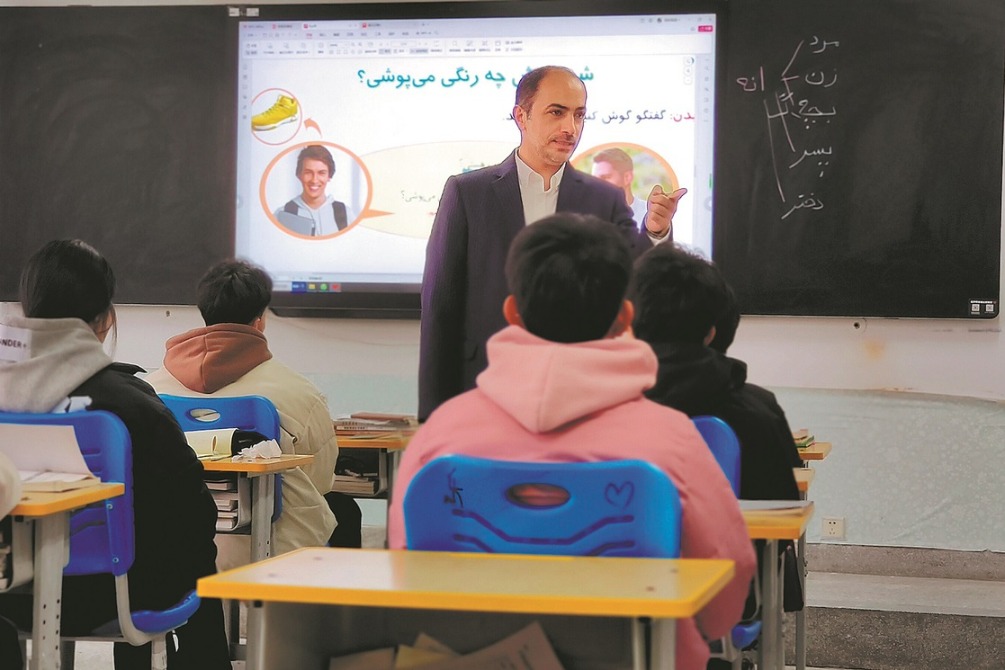Subsidies improve access to assistive devices for disabled, seniors
By LI LEI | China Daily | Updated: 2024-02-29 10:12
Lozang Dawa, who lost his left leg in a car crash in 2016, never thought about getting a prosthetic leg until recently.
The 32-year-old, who lives in a rural part of Lhasa, capital of Xizang autonomous region, said he did not dare learn what one cost, fearing that only being able to dream about it would add to his family's financial strains.
"I was overwhelmed with grief and a sense of self-abasement after the accident," he said, adding that he used to be his family's sole breadwinner, working as a porter with a logistics company, but his younger sisters had since taken over that role.
Earlier this year, Lozang Dawa became one of the first beneficiaries of a regionwide program to compensate people for the full cost of up to 140 assistive items, ranging from hearing aids and wheelchairs to digital solutions such as screen-reading software.
In the course of a week, the ethnic Tibetan registered for the program, was measured and joined a rehabilitation training session for potential prosthetic leg users. Once it was fitted, his newfound ease of movement quickly helped him land a job with a local internet service provider that is expanding rapidly as China bolsters digital infrastructure in remote areas.
"My job abates the financial burden, and it also makes me more confident, independent," he said.
The China Disabled Persons' Federation said this month that the Xizang program is experimenting with a trial period to provide full coverage for 140 types of devices that fall into six disability categories, making Xizang the last provincial-level jurisdiction on the Chinese mainland to subsidize assistive devices. Such products are widely viewed as crucial in helping disabled people and older adults navigate various degrees of physical dysfunction and lead independent, dignified lives.
The federation said disabled individuals with Xizang hukou — residency documents — are eligible to apply for the subsidy. Residents age 65 and older, who often have various degrees of disability but do not hold certificates issued to disabled people, can also apply.
According to the World Health Organization, more than 2.5 billion people worldwide need one or more assistive products, and with an aging global population and a rise in chronic diseases, an estimated 3.5 billion people will need them by 2050. But the WHO said that in many countries most people in need do not have access to such products.
China has an estimated 85 million disabled people who are prone to poverty due to limited employment opportunities, and about 40 million seniors wrestle with some form of physical dysfunction, according to government data.
The subsidy was first rolled out in Shanghai in 2003, with Beijing following suit in 2010. Between 2016 and 2020, a crucial period for the national antipoverty campaign, nine provincial-level jurisdictions began to offer subsidies, and the rest of the country raced to roll out such programs in the years that followed.
With the exception of the Inner Mongolia autonomous region, jurisdictions have formulated catalogs of assistive devices eligible for compensation, and the compensation prioritizes those with financial difficulties, such as recipients of subsistence allowances and the jobless.
The lack of a list in Inner Mongolia means that applications there must be verified on a case-by-case basis, which takes longer.
Fourteen jurisdictions, including Tianjin, and the provinces of Shanxi, Jilin and Jiangsu, provide full coverage to listed products.
Beneficiaries said such devices are crucial in helping them improve their quality of life, increase their independence, and enhance their ability to participate in various activities at home, at work, and in the community.
Liu Jian, 40, was diagnosed as being deaf at age 3, a possible outcome of a serious allergic reaction involving penicillin. His working-class parents wanted to buy him a hearing aid but could not afford one because it cost about 10 times his father's monthly salary.
An early beneficiary of the subsidy, he said the rolling out of the policy had eased the financial stress. Hearing aids now cost about 8,000 yuan ($1,200) and they need to be updated every few years.
"Without the policy, the financial pressure would be enormous," Liu said. "But without a hearing aid, I would have problems making phone calls."
In recent years, jurisdictions including Beijing and Shaanxi province have unveiled websites where applicants can browse products and place orders, with prices reduced by the subsidy. That saves buyers the trouble of paying full price upfront and claiming compensation later.
Guo Yuanyuan, a Beijing resident who is paralyzed from the waist down, spent 30,000 yuan in 2018 on a sports wheelchair. The 39-year-old, who now works for a nonprofit group, paid the full price because such wheelchairs were not included in the catalog at the time.
The website now serves as a showcase of the latest technologies, and she browses it occasionally to check for updated versions of sports wheelchairs.
"I have been following a sports wheelchair listed at 10,000 yuan on the website," Guo said. "That is about 3,000 yuan cheaper than if I buy it elsewhere."
She said most brand-name products on the website were listed at steeply discounted prices as a result of negotiations between the authorities and manufacturers.
Yan Zhongqian contributed to this story.
























